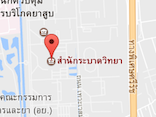Identifying the Blood Lead Reference Value Based on the Advisory Committee on Childhood Lead Poisoning Prevention Guidelines and Factors Associated with Elevated Blood Lead Levels among Preschool Children in Thailand, 2019
Main Article Content
Abstract
The blood lead reference value (BLRV) is used for guiding lead prevention and control measures. It is usually defined as the 97.5th percentile of the population-based blood lead level in each country. This study aims to determine the BLRV and factors associated with elevated (≥5 µg/dL) blood lead levels among children aged 1–5 years in Thailand. A cross-sectional study was conducted using secondary data extracted from a national survey, implemented in 171 hospitals during October 2018–September 2019. Demographic characteristics and potential risk factors including lead-related industries were collected. Multilevel logistic regression was used. Of 3,184 children included in the survey, the BLRV was 6.9 µg/dL. Three significant risk factors were identified: living near a lead factory (adjusted odds ratio (AOR) 2.09, 95% CI 1.27–3.42), exposure to the manufacture of fishing tackle (AOR 4.39, 95% CI 1.54–12.50), and exposure to the manufacture of shot and ammunition (AOR 6.30, 95% CI 1.81–21.93). Despite a calculated BLRV of 6.9 µg/dL, we propose a BLRV of 5 μg/dL in Thailand based on guidelines from the United Kingdom. Surveillance of blood lead levels should be established among children at high risk of lead exposure.
Keywords: blood lead reference value, elevated blood lead level, preschool children, Thailand
Article in English


